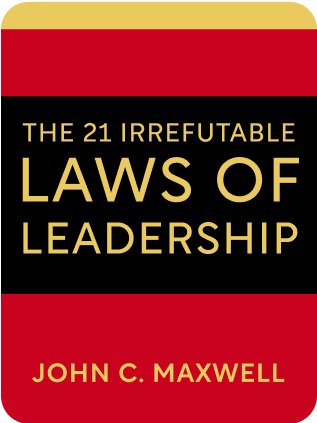

This article is an excerpt from the Shortform book guide to "The 21 Irrefutable Laws Of Leadership" by John C. Maxwell. Shortform has the world's best summaries and analyses of books you should be reading.
Like this article? Sign up for a free trial here .
What is the Law of the Inner Circle? What qualities would you like the people in your inner circle to have?
The Law of the Inner Circle states that your success is, to a large extent, determined by the people who are closest to you. That’s why Maxwell stresses the importance of vetting the people you are going to accept into your inner circle.
Keep reading to learn about the Law of the Inner Circle and how to build one.
John C. Maxwell: The Law of the Inner Circle
Nobody’s good at everything. Nobody achieves greatness by themselves. A leader’s success is determined by the people in his/her inner circle.
There are limits to what you can achieve personally. Once you’ve budgeted and scheduled all your time and energy, you need help to extend your reach and continue impacting people.
An inner circle can be within an organization (for example, everyone on a board of directors) and it can refer to the wider circle of the people you know. Therefore, most leaders already have an inner circle, though they may not have been intentional about creating it. Subconsciously, leaders recruit people they like or people they’re comfortable around. Consider what you want to do and if the people around you are capable of helping you get there. If your team can’t help you reach your leadership potential, then none of your people will reach their potential either.
There are some traits to look for in potential teammates, listed below. You’ll notice that many of them are leadership traits—when you’re putting together your leadership team, you should particularly look for other leaders.
- Influence. If your potential team members are influential, you’ll reach far more people than you would alone.
- For example, at Skyline Church, John C. Maxwell recruited a man named Jim to his team. Jim was the most influential person at the church, so whenever Maxwell influenced Jim, Jim would influence everyone else.
- Complementariness. Does the potential teammate have skills that are different from yours?
- For example, Maxwell hired an assistant who is detail-oriented, because that’s an area where he’s weak.
- Position in the organization. If you have to work with someone in order for your organization to succeed, they should be on your team.
- Value. Is the potential teammate an asset to you and the organization? Have they got a successful track record?
- Being valuable to you personally isn’t selfish—if your team members have a negative effect on you, and you’re leading the organization when you’re not at your best, the organization will suffer.
- Chemistry.
- Does the potential teammate interact positively with other members of the team? Do they have a niche where they can uniquely contribute?
- Do they make the other members of the team better, by encouraging them, helping them, or competing with them?
- Morally upstanding. This is a dealbreaker. Morally upstanding people shouldn’t automatically be added to your team, but morally suspect people should definitely not make the cut.
Once you’ve collected your leadership team, it’s time to develop the individuals by doing the following:
- Develop your relationship with your team members. Spend time with them and mentor them.
- Give them a chance to practice leadership. Give them responsibility and hold them to a high standard.
- Find meaning in their results. When things go well, give them credit. If things don’t go well, hold them accountable.
If you’re part of a large organization and have many followers, it’s impractical to include everyone who works for you in your inner circle. Narrow down your circle to a smaller leadership team when:
- You have 7 or more immediate staff members
- You have too many followers to hands-on lead all of them
- You’re running a volunteer organization and leadership team membership should consist of volunteers as well as paid staff
Example of Failed Application of the Law: Skyline Church
When John C. Maxwell arrived at Skyline Church, attendance was flatlining. Maxwell met with every staff member to assess their skills, and he discovered that none of them were strong leaders. In an organization like a church, the staff members are the leadership team. Because the previous pastor hadn’t surrounded himself with a strong leadership team, the church wasn’t attracting any new members. The only way to quickly strengthen the leadership team was to replace the staff with better leaders.
Example of Successful Application of the Law: Lance Armstrong
Lance Armstrong was only able to win the Tour de France seven times in a row because he had a stellar leadership team.
On his own, Armstrong came up with inefficient training routines. He needed Chris Carmichael, his coach, to help him. He also wasn’t good at tactics. Johan Bruyneel, sports director and master tactician, took over that job. The Armstrong team also included other cyclists who rode with Armstrong, and sponsors and equipment suppliers.
A leader must perform, and Lance delivered every single time, thanks, in large part, to his leadership team.
Applying the Law of the Inner Circle
The Law of the Inner Circle states that a leader’s success is determined by the people in his/her inner circle. Who are the people currently in your inner circle? Consider family members, employees, mentors, and so on.
Your team probably contains several people who are good at the same things you are. What are their strengths? Are they influential or morally upstanding? What skills does each person bring to the group?
Think of three people (at least one of whom is a leader) who possess the skills your inner circle lacks. Consider adding them to your team.

———End of Preview———
Like what you just read? Read the rest of the world's best book summary and analysis of John C. Maxwell's "The 21 Irrefutable Laws Of Leadership" at Shortform .
Here's what you'll find in our full The 21 Irrefutable Laws Of Leadership summary :
- Why working with people is the only way to do meaningful work
- How to become the kind of person that can get things done
- Why you don't need to be good at all the laws of leadership to be a good leader






